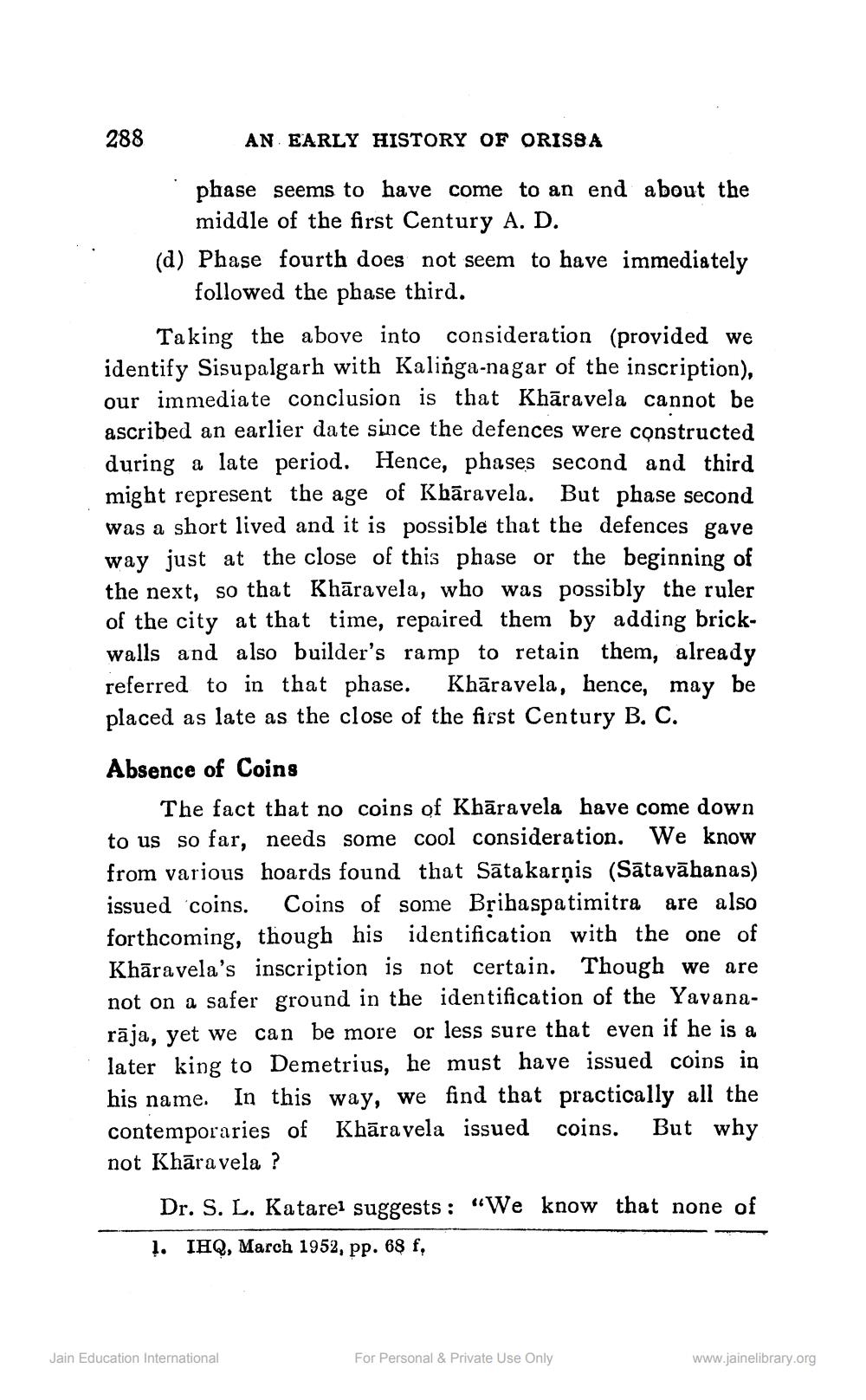________________
288
AN EARLY HISTORY OF ORISSA
phase seems to have come to an end about the
middle of the first Century A. D. (d) Phase fourth does not seem to have immediately
followed the phase third.
Taking the above into consideration (provided we identify Sisupalgarh with Kalinga-nagar of the inscription), our immediate conclusion is that Khāravela cannot be ascribed an earlier date since the defences were constructed during a late period. Hence, phases second and third might represent the age of Kbāravela. But phase second was a short lived and it is possible that the defences gave way just at the close of this phase or the beginning of the next, so that Khāravela, who was possibly the ruler of the city at that time, repaired them by adding brickwalls and also builder's ramp to retain them, already referred to in that phase. Khāravela, hence, may be placed as late as the close of the first Century B. C. Absence of Coins
The fact that no coins of Khāravela have come down to us so far, needs some cool consideration. We know from various hoards found that Sāta karņis (Sātavāhanas) issued coins. Coins of some Bșihaspatimitra are also forthcoming, though his identification with the one of Khāravela's inscription is not certain. Though we are not on a safer ground in the identification of the Yavanarāja, yet we can be more or less sure that even if he is a later king to Demetrius, he must have issued coins in his name. In this way, we find that practically all the contemporaries of Khāravela issued coins. But why not Khāravela ?
Dr. S. L. Katarel suggests : “We know that none of Į. IHQ, March 1952, pp. 68 f,
Jain Education International
For Personal & Private Use Only
www.jainelibrary.org




